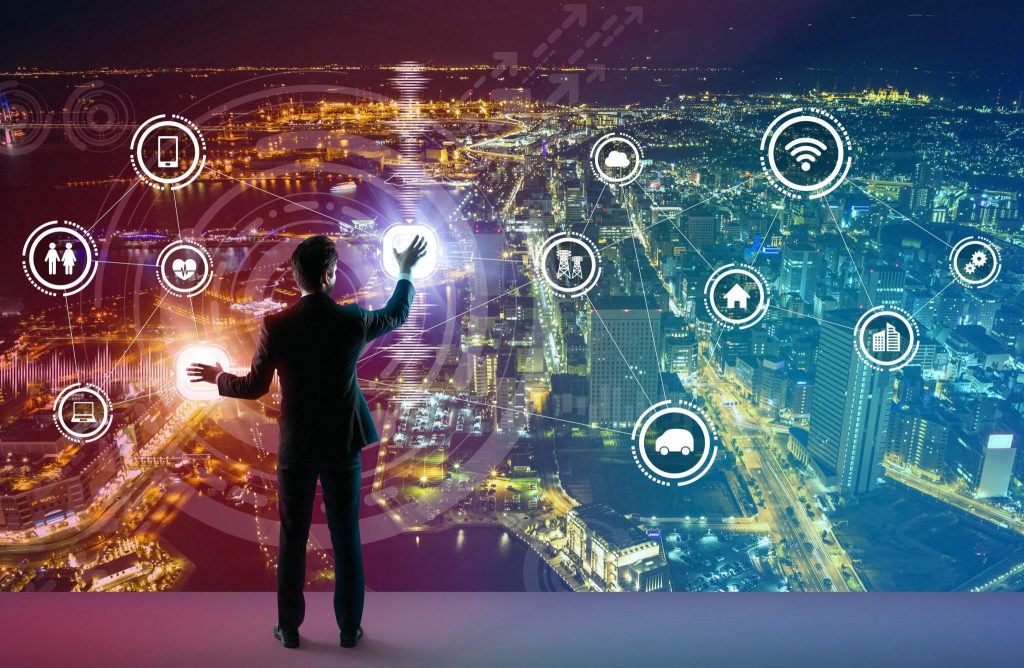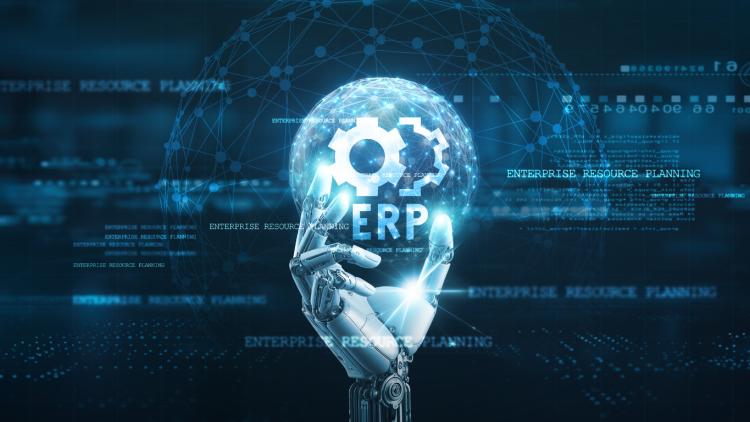In today’s fast-paced and interconnected world, technology continues to evolve at an exponential rate. Among the myriad of technological innovations, Artificial Intelligence (AI) and digital transformation (often referred to as digitalization or “digital intelligence”) stand out as the most powerful driving forces in shaping the future of industries, economies, and societies. This article will explore how AI and digital transformation are not only revolutionizing businesses but also creating new opportunities, challenges, and paradigms across various sectors. We will also delve into the implications of AI and digital transformation on the workforce, ethics, and global competitiveness, while offering insights into their integration for sustainable and resilient development.
1. Introduction: Understanding the Technological New Drivers
The concept of technological new drivers refers to innovations that act as catalysts for profound changes across industries, economies, and global markets. AI and digital transformation have emerged as the primary technological drivers of this change, enabling organizations to evolve, innovate, and remain competitive in an increasingly digital and data-driven world.
- Artificial Intelligence (AI) refers to the development of machines that can perform tasks that traditionally required human intelligence, such as decision-making, pattern recognition, natural language understanding, and autonomous action.
- Digital Transformation represents a comprehensive reimagining of business processes, services, and customer experiences, underpinned by digital technologies like cloud computing, big data analytics, and the Internet of Things (IoT).
Together, AI and digital transformation are acting as the bedrock upon which businesses and governments are building the future. From automating routine tasks to creating entirely new business models, these technologies are reshaping how organizations operate and interact with customers and employees.
2. AI: The Core of Technological Innovation
AI encompasses a broad spectrum of technologies, including machine learning (ML), deep learning (DL), natural language processing (NLP), and robotics. These advancements allow machines to process vast amounts of data, recognize patterns, make predictions, and act autonomously. Here’s a closer look at some of AI’s core applications:
2.1 Machine Learning and Data Analytics
Machine learning, a subset of AI, enables systems to learn and improve from experience without being explicitly programmed. Businesses use machine learning to analyze large datasets, extract actionable insights, and optimize decision-making processes. For example, e-commerce platforms employ recommendation algorithms that predict and suggest products based on user behavior and preferences.
2.2 Deep Learning: Driving Automation and Personalization
Deep learning, a more advanced form of machine learning, mimics the human brain’s neural networks to identify patterns in unstructured data such as images, audio, and text. In industries like healthcare, deep learning models analyze medical imaging to diagnose diseases with accuracy surpassing that of human doctors. In marketing, deep learning powers personalization engines that deliver highly tailored experiences to customers, boosting engagement and sales.
2.3 Natural Language Processing (NLP)
NLP enables machines to understand and generate human language, which is fundamental to customer service automation, sentiment analysis, and virtual assistants like Siri and Alexa. By leveraging NLP, businesses can automate communication channels, improve customer satisfaction, and gather valuable insights into consumer behavior.
2.4 Robotics Process Automation (RPA)
AI-powered robotics are automating a wide range of business processes, from administrative tasks to complex manufacturing workflows. Robotic process automation (RPA) helps businesses reduce costs, improve accuracy, and free up human workers for higher-value tasks.
3. Digital Transformation: Reshaping Industries and Business Models
Digital transformation goes beyond merely adopting new technologies; it represents a fundamental shift in how companies operate and deliver value to customers. At its core, digital transformation is about leveraging technology to improve processes, create new revenue streams, and enhance customer experiences. Here are some ways AI is driving digital transformation:
3.1 Cloud Computing: The Backbone of Digital Transformation
Cloud computing has revolutionized how businesses store and access data. By moving data to the cloud, organizations reduce infrastructure costs, increase flexibility, and improve scalability. The integration of AI with cloud technologies allows businesses to harness powerful computing resources on-demand, enabling real-time analytics, predictive modeling, and machine learning at scale.
3.2 The Internet of Things (IoT): Connecting the Digital World
The Internet of Things refers to the network of interconnected devices that communicate and share data with each other. From smart homes to industrial sensors, IoT is creating vast amounts of data that can be analyzed by AI algorithms to optimize performance, predict maintenance needs, and automate decision-making. For example, smart factories use IoT devices to monitor equipment health, predict failures, and enhance operational efficiency.
3.3 Big Data and Advanced Analytics
Digital transformation thrives on the ability to collect, store, and analyze large amounts of data. AI-powered analytics tools provide businesses with real-time insights into customer behavior, supply chain performance, market trends, and much more. This wealth of information enables businesses to make data-driven decisions and anticipate market changes, giving them a competitive edge.
3.4 Customer-Centric Innovation
AI is also driving a shift toward more customer-centric business models. By leveraging customer data, AI systems can personalize products, services, and experiences in ways that were previously unthinkable. For example, AI-driven chatbots provide customers with instant support, while predictive analytics can anticipate their needs and offer proactive solutions.
4. The Implications of AI and Digital Transformation on the Workforce
As AI and digital transformation reshape industries, they also have profound implications for the workforce. Automation and AI-driven tools are eliminating certain jobs, while creating new roles that require different skills. The key challenge will be ensuring that workers are equipped with the skills necessary to thrive in an AI-powered economy.
4.1 The Rise of New Job Categories
While some jobs are being automated, others are emerging. Roles in data science, machine learning, and AI ethics are in high demand. Additionally, as organizations become more digitally sophisticated, demand for digital transformation experts, cybersecurity professionals, and cloud architects is expected to grow.
4.2 Upskilling and Reskilling the Workforce
To ensure workers remain competitive, companies must invest in training programs that teach employees how to work with AI technologies. Governments and educational institutions also have a role to play in providing the skills needed for the jobs of tomorrow. Upskilling and reskilling will be critical to creating a workforce that is adaptable to the changing technological landscape.
4.3 Job Displacement and Ethical Concerns
The rise of automation also raises concerns about job displacement, particularly in industries like manufacturing, retail, and customer service. AI’s ability to perform repetitive and mundane tasks with greater accuracy and efficiency means that certain jobs may become obsolete. This creates a need for policies that support workers who may be displaced by automation, including social safety nets and retraining programs.

5. Ethical Considerations: The Need for Responsible AI
As AI and digital transformation continue to permeate every aspect of life, it is essential to consider the ethical implications of these technologies. There are several key concerns that must be addressed:
5.1 Bias in AI Algorithms
AI systems are only as good as the data they are trained on. If the data contains biases—such as racial, gender, or socioeconomic biases—AI algorithms may perpetuate and even amplify these biases. This is particularly concerning in sensitive areas like hiring, criminal justice, and healthcare. Ensuring fairness and transparency in AI systems is essential to preventing discrimination and inequality.
5.2 Privacy and Data Security
As more businesses collect data through digital channels, ensuring the privacy and security of that data becomes paramount. Organizations must adhere to strict data protection regulations, such as the General Data Protection Regulation (GDPR) in Europe, and invest in robust cybersecurity measures to safeguard user information from cyber threats.
5.3 The Future of Human-AI Collaboration
Rather than replacing humans entirely, the future of AI is likely to be one of collaboration. Human workers will be able to leverage AI tools to augment their capabilities, improve decision-making, and increase productivity. The challenge will be creating environments where humans and machines can work together in harmony.
6. The Road Ahead: Global Competitiveness and Sustainability
The integration of AI and digital transformation is not just an opportunity for individual companies, but for entire nations to enhance their competitiveness on the global stage. Countries that embrace digital innovation will have a distinct advantage in terms of economic growth, job creation, and global influence.
6.1 Driving Innovation Through Collaboration
As AI and digital transformation continue to evolve, collaboration across sectors and borders will be crucial. Governments, businesses, and academia must work together to foster innovation, create regulatory frameworks, and build sustainable solutions that benefit society as a whole.
6.2 The Role of Policy and Regulation
Governments must play an active role in shaping the future of AI and digital transformation. This includes developing regulations that balance innovation with ethical considerations, ensuring equitable access to technology, and protecting the rights of workers and consumers.
6.3 Sustainability and Resilience
In the face of climate change and other global challenges, AI and digital transformation also offer solutions to create more sustainable and resilient societies. From optimizing energy consumption to improving disaster response systems, digital technologies have the potential to address some of the most pressing issues of our time.
7. Conclusion: The Future is Now
AI and digital transformation are not just technological trends—they represent the future of how we work, interact, and live. As organizations continue to harness the power of AI and digital technologies, they are not just reimagining business—they are reshaping the very fabric of our societies.
While the road ahead will undoubtedly be filled with challenges, it is also an exciting time of unprecedented opportunity. By embracing these new technological drivers responsibly and ethically, we can build a more innovative, inclusive, and sustainable future for all.
This comprehensive exploration of AI and digital transformation highlights their profound impact
on various aspects of business, society, and the economy. Whether you’re a business leader, policymaker, or technologist, understanding these developments is crucial for navigating the complexities of the modern world.

















































